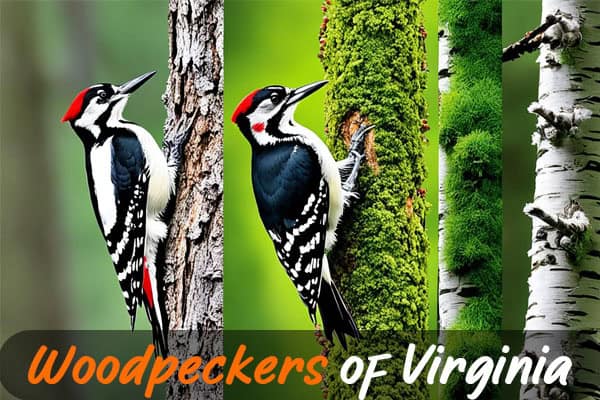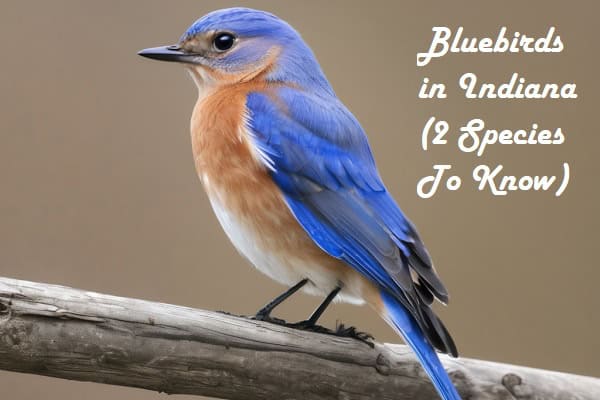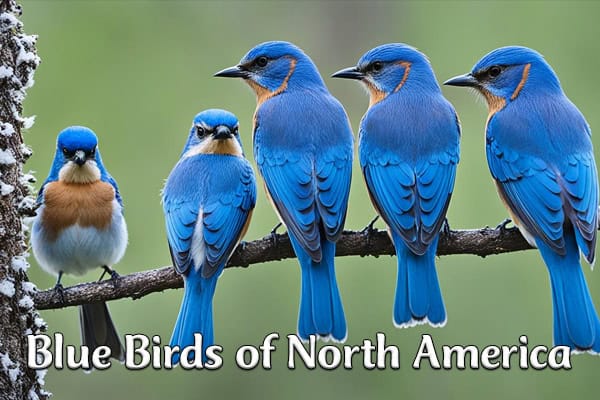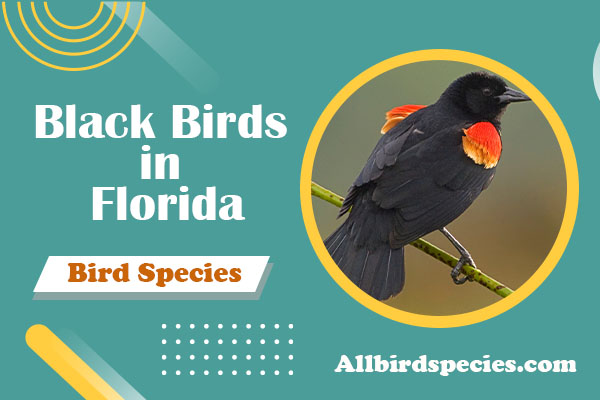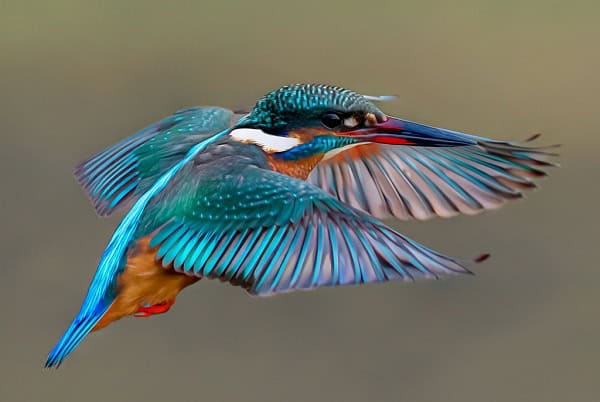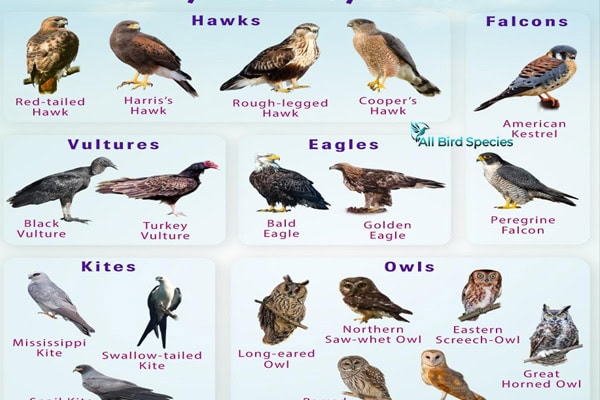15 Blue Colored Birds of Texas: Identification With Pictures
Blue Colored Birds of Texas are among the most delightful avian species to observe, each with unique colors, patterns, and behaviors. Identifying these feathered gems adds joy to outdoor exploration, whether you’re an avid birdwatcher or a casual nature enthusiast. This guide introduces 15 blue-colored birds across Texas, featuring detailed descriptions, fascinating facts, and tables summarizing their attributes for quick reference.
1. Eastern Bluebird
The Eastern Bluebird is a favorite among birdwatchers, with its sky-blue wings and back contrasting against a warm orange chest and white belly. These charming birds are a hallmark of the Texan countryside, thriving in open spaces like meadows and forest edges. Their cheerful, warbling songs are a delightful reminder of the beauty of nature.
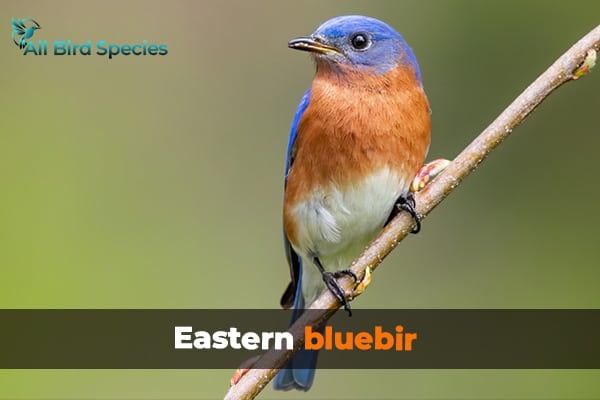
Male Eastern Bluebirds are more vividly colored than females, who display more muted hues of blue and gray. They are cavity nesters, often found in tree hollows or specially designed nest boxes. As insectivores, they are excellent for natural pest control, feeding on beetles, caterpillars, and other small insects.
| Attribute | Details |
|---|---|
| Scientific Name | Sialia sialis |
| Size | 6.5–7.5 inches |
| Wingspan | 9.8–12.6 inches |
| Diet | Insects, berries |
| Habitat | Open woodlands, fields, suburban areas |
2. Blue Jay
The Blue Jay is one of the most intelligent and adaptable birds in Texas, easily recognized by its bright blue plumage, white chest, and black markings around the face. These vocal birds are known for their loud calls and mimicry, sometimes imitating hawk calls to scare away predators or competitors.
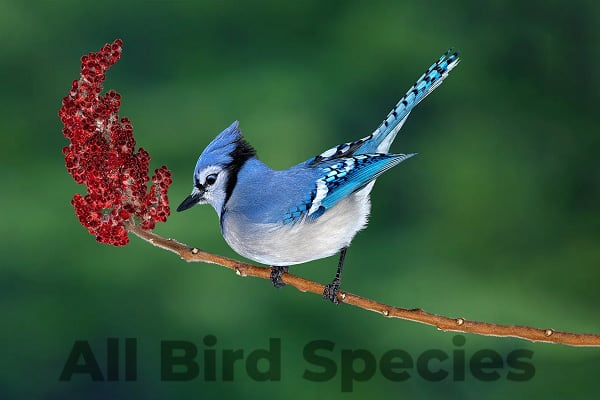
Blue Jays are opportunistic feeders, thriving on a diverse diet that includes acorns, seeds, insects, and even small vertebrates. They are social birds, often seen in pairs or family groups. Their role in spreading oak trees by caching acorns has a significant impact on the environment.
| Attribute | Details |
|---|---|
| Scientific Name | Cyanocitta cristata |
| Size | 9–12 inches |
| Wingspan | 13–17 inches |
| Diet | Seeds, nuts, insects |
| Habitat | Woodlands, suburban areas |
3. Indigo Bunting
The Indigo Bunting is a small, eye-catching bird, especially during the breeding season when males display a vibrant, all-blue plumage. These birds add a splash of color to the Texan landscape, frequenting fields, forest edges, and roadsides. Females, on the other hand, are a subtle brown with faint streaks, providing effective camouflage.
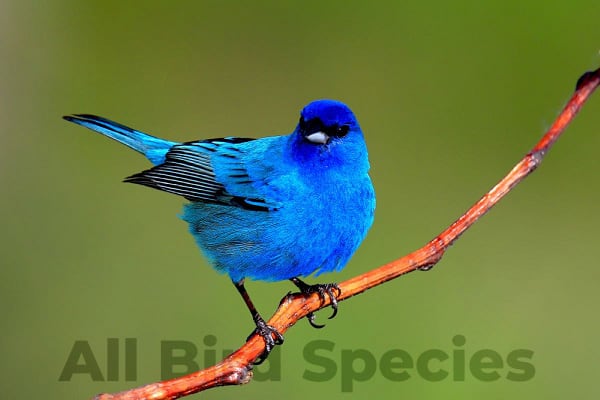
Indigo Buntings are migratory birds that travel thousands of miles between their breeding grounds in the United States and their wintering grounds in Central and South America. Their sweet, high-pitched songs can often be heard from exposed perches during spring and summer.
| Attribute | Details |
|---|---|
| Scientific Name | Passerina cyanea |
| Size | 5–5.5 inches |
| Wingspan | 7.5–8.5 inches |
| Diet | Seeds, berries, insects |
| Habitat | Forest edges, fields |
4. Lazuli Bunting
The Lazuli Bunting is a rare but breathtaking visitor to western Texas, characterized by its bright blue head, orange chest, and white belly. Males are particularly stunning during the breeding season, using their vibrant plumage and melodic songs to attract mates. These birds prefer brushy areas and open woodlands.
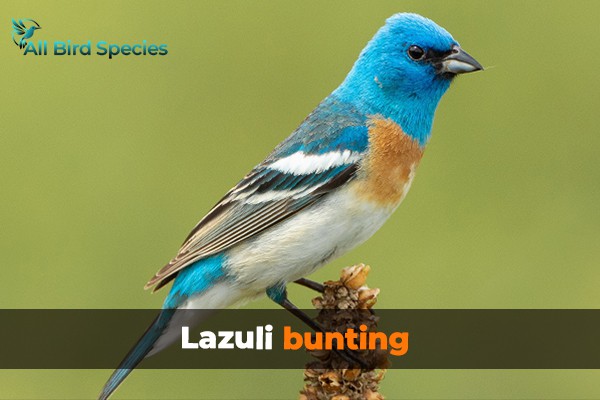
Although less common than the Indigo Bunting, Lazuli Buntings often share similar habitats. During migration, they can sometimes be spotted in mixed flocks with other songbirds. Their diet consists of seeds, berries, and small insects, which they forage for energetically in low vegetation.
| Attribute | Details |
|---|---|
| Scientific Name | Passerina amoena |
| Size | 5–6 inches |
| Wingspan | 8–9 inches |
| Diet | Seeds, fruits, insects |
| Habitat | Brushy areas, open forests |
5. Western Scrub-Jay
The Western Scrub-Jay, with its striking blue and white coloration, is a hardy bird often seen in the drier regions of Texas. It is a curious and bold species, unafraid of human presence and frequently observed exploring picnic areas or gardens.
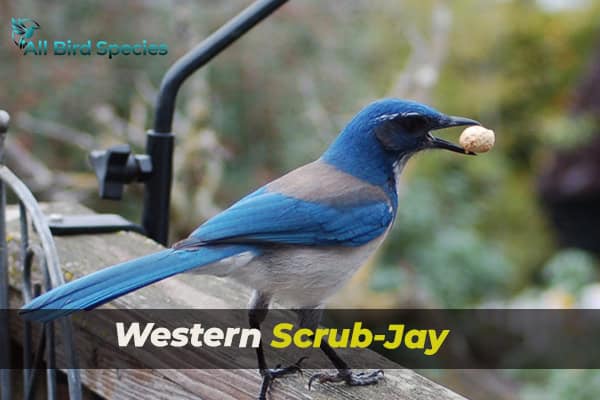
These birds are known for their excellent memory, which helps them store food like acorns for the winter. Western Scrub-Jays are highly intelligent and playful, sometimes engaging in cooperative behaviors within small social groups.
| Attribute | Details |
|---|---|
| Scientific Name | Aphelocoma californica |
| Size | 11–12 inches |
| Wingspan | 15–16 inches |
| Diet | Seeds, nuts, fruits, insects |
| Habitat | Scrublands, dry forests |
6. Mexican Jay
The Mexican Jay is a social bird often found in the oak and pine forests of southwestern Texas. These birds are striking with their pale blue feathers and soft gray underparts. Mexican Jays live in family groups and are known for their cooperative behaviors, such as helping relatives raise their young.
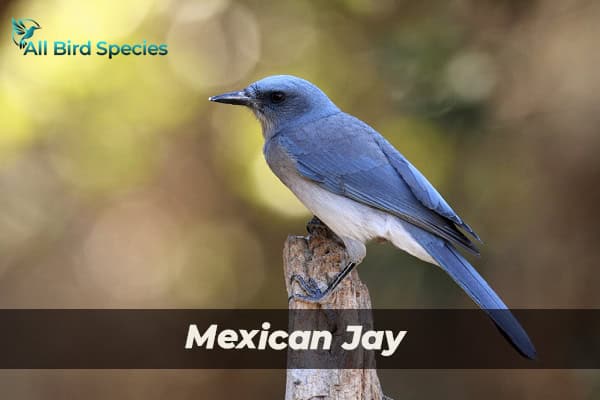
These omnivorous birds feed on a variety of food, including acorns, berries, insects, and even small reptiles. Their gregarious nature makes them a favorite among birdwatchers, as they are often seen flitting about in groups, chattering noisily.
| Attribute | Details |
|---|---|
| Scientific Name | Aphelocoma wollweberi |
| Size | 11.5 inches |
| Wingspan | 14–16 inches |
| Diet | Insects, berries, seeds |
| Habitat | Oak and pine forests |
7. Painted Bunting (Male)
The male Painted Bunting is often referred to as one of the most beautiful birds in North America. While the species overall is known for its rainbow-like coloration, the males have brilliant blue heads and backs that set them apart. This vibrant coloration is used to attract mates during the breeding season, while females and juveniles exhibit a more subdued green plumage, offering better camouflage.

These birds prefer habitats with dense shrubs and open woodlands, where they can forage for seeds and insects. They are elusive and shy by nature, often hiding in thick vegetation. Painted Buntings migrate south to Central America for the winter, making them a seasonal treat for birdwatchers in Texas.
| Attribute | Details |
|---|---|
| Scientific Name | Passerina ciris |
| Size | 5.5 inches |
| Wingspan | 8 inches |
| Diet | Seeds, insects |
| Habitat | Woodland edges, thickets |
8. Tree Swallow
The Tree Swallow is a sleek, graceful bird that dazzles observers with its metallic blue-green back and clean white belly. Found across Texas during the warmer months, these birds are often seen flying in acrobatic patterns as they hunt insects mid-flight. Tree Swallows are a common sight near open water, where insect populations thrive.
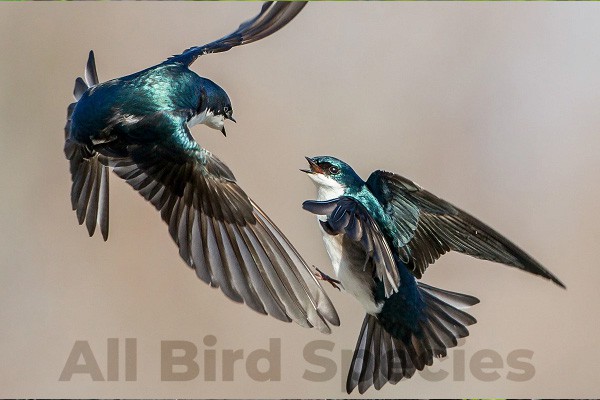
In addition to their stunning plumage, Tree Swallows are known for their social nature, often nesting in colonies. They use tree cavities or man-made nest boxes to raise their young, and their populations benefit greatly from conservation efforts to provide suitable nesting sites.
| Attribute | Details |
|---|---|
| Scientific Name | Tachycineta bicolor |
| Size | 5–6 inches |
| Wingspan | 11–13 inches |
| Diet | Insects, berries |
| Habitat | Open fields near water |
9. Barn Swallow
The Barn Swallow, known for its graceful flight and deep blue back, is an iconic bird often seen skimming over open fields and water. Its rust-colored throat and underparts provide a striking contrast to its blue wings and forked tail. These agile birds are frequently associated with human structures, building their nests out of mud under eaves and bridges.
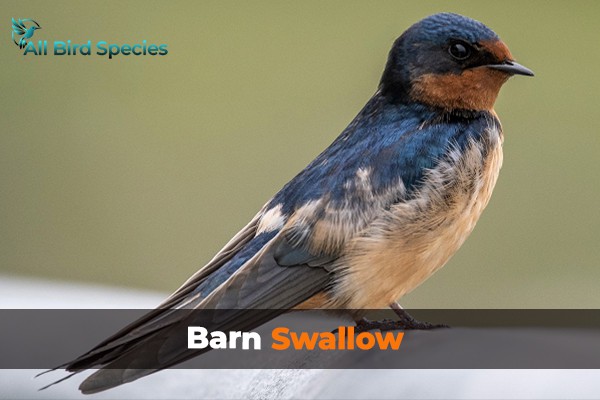
Barn Swallows are remarkable long-distance migrants, traveling thousands of miles to South America for the winter. Their energetic flight and distinctive chirping calls make them a joy to watch during the breeding season in Texas.
| Attribute | Details |
|---|---|
| Scientific Name | Hirundo rustica |
| Size | 6–7 inches |
| Wingspan | 13–15 inches |
| Diet | Insects |
| Habitat | Open fields, near barns or bridges |
10. Blue Grosbeak
The Blue Grosbeak is a robust songbird known for its deep blue feathers and distinctive rusty wing bars. These birds are less common than other buntings, but their striking appearance makes them easy to identify. Males are entirely blue during the breeding season, while females have a more subtle brown coloration.

Blue Grosbeaks prefer open areas with shrubs or tall grasses where they forage for seeds and insects. Their rich, melodious songs can often be heard during the spring and summer, making them a treat for bird enthusiasts.
| Attribute | Details |
|---|---|
| Scientific Name | Passerina caerulea |
| Size | 6–7 inches |
| Wingspan | 10–12 inches |
| Diet | Seeds, insects |
| Habitat | Shrublands, open fields |
11. Belted Kingfisher
The Belted Kingfisher is a striking bird commonly found near rivers, lakes, and ponds in Texas. Its blue-gray back and wings, coupled with a white belly and chest, make it instantly recognizable. The female is uniquely more colorful than the male, sporting a rust-colored band across her chest.

These birds are skilled fishers, diving headfirst into the water to catch their prey. They nest in burrows dug into riverbanks, an unusual trait among bird species. Their loud, rattling calls often announce their presence long before they are seen.
| Attribute | Details |
|---|---|
| Scientific Name | Megaceryle alcyon |
| Size | 11–14 inches |
| Wingspan | 19–23 inches |
| Diet | Fish, aquatic insects |
| Habitat | Rivers, lakes, ponds |
12. Purple Martin
The Purple Martin is the largest North American swallow and a beloved species in Texas. Despite their name, adult males appear deep blue with an iridescent sheen that may look purple under certain lighting. Females and juveniles are duller in color, with lighter underparts.

These Blue Colored Birds of Texas depend on humans for nesting sites, primarily using specially designed birdhouses. They are aerial insectivores, spending much of their time in flight catching mosquitoes and other flying insects. Watching their synchronized flight patterns is a mesmerizing experience.
| Attribute | Details |
|---|---|
| Scientific Name | Progne subis |
| Size | 7.5–8 inches |
| Wingspan | 15–16 inches |
| Diet | Flying insects |
| Habitat | Open areas near water |
13. Rock Pigeon (Blue Morph)
While Rock Pigeons are ubiquitous, the Blue Morph variety is notable for its rich blue-gray feathers and iridescent neck. These adaptable birds thrive in urban environments, often seen perched on buildings, bridges, or telephone wires.

Rock Pigeons have an interesting history, having been domesticated by humans for thousands of years. They are highly social, often traveling in flocks, and their cooing sounds are a familiar part of city life.
| Attribute | Details |
|---|---|
| Scientific Name | Columba livia |
| Size | 11–14 inches |
| Wingspan | 20–26 inches |
| Diet | Grains, seeds, scraps |
| Habitat | Urban areas, cliffs |
14. Mountain Bluebird
The Mountain Bluebird, with its powder-blue feathers, is a rare but delightful sight in Texas during migration. Unlike the Eastern Bluebird, this species lacks the orange coloration, appearing entirely blue with paler underparts. Males are particularly striking, while females are grayish with hints of blue.
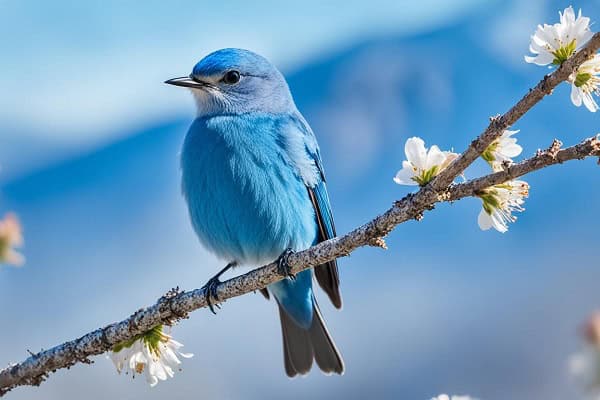
Mountain Bluebirds prefer open grasslands and meadows. They are cavity nesters and will readily use nest boxes provided by conservationists. Their presence in Texas is seasonal, adding a unique challenge for birdwatchers hoping to spot them.
| Attribute | Details |
|---|---|
| Scientific Name | Sialia currucoides |
| Size | 6.5–7 inches |
| Wingspan | 11–14 inches |
| Diet | Insects, berries |
| Habitat | Open fields, grasslands |
15. Cerulean Warbler
The Cerulean Warbler is one of the smallest and most delicate blue birds in Texas, with a soft sky-blue back and white underparts streaked with black. These birds are migratory and are often seen during their journey between North and South America.
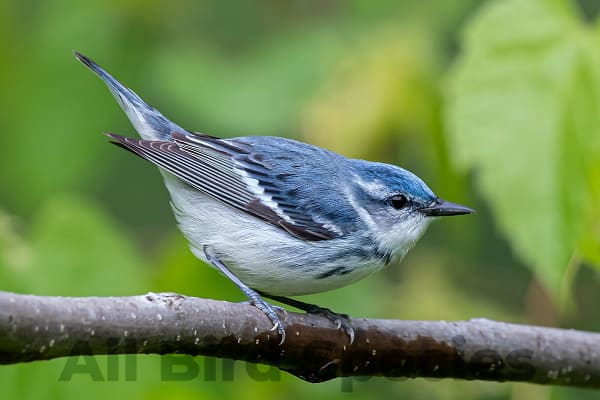
Cerulean Warblers are forest-dwelling birds that prefer tall trees. Their populations are declining due to habitat loss, making sightings increasingly rare. Conservation efforts are crucial to ensuring this beautiful species remains part of Texas’s natural heritage.
| Attribute | Details |
|---|---|
| Scientific Name | Setophaga cerulea |
| Size | 4.5 inches |
| Wingspan | 7.5 inches |
| Diet | Insects |
| Habitat | Mature forests, wooded edges |
Final Thoughts about Blue Colored Birds of Texas
Texas is a haven for birdwatchers, offering an incredible variety of blue-colored birds to admire. From the common Blue Jay to the elusive Cerulean Warbler, these species captivate with their vibrant plumage, unique behaviors, and the habitats they call home. By learning about their characteristics and habits, bird enthusiasts can deepen their appreciation for these stunning creatures and contribute to their conservation.


